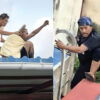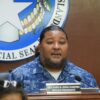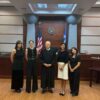(APASEEM) — On Thursday, Aug. 5, 2021, starting at 8:30 a.m. and going until approximately 9:30 a.m., two interesting presentations concerning local research efforts will be shared. APASEEM will be hosting in cooperation with local and federal resource management agencies. The public is invited and, as at all APASEEM gatherings, audience participation is highly encouraged. Both talks will be conducted entirely using telecommunication via Google meet.
The Asia Pacific Academy of Sciences, Science Education, and Environmental Management or APASEEM is pleased to lend support to the efforts of the two scholars as they present current and very significant findings.
Both talks utilize and contribute to the knowledge gained at the Saipan Lagoon Coral Nursery Demonstration site and with ongoing research efforts at Johnston Applied Marine Science. One is a presentation about the accuracy of 3D photogrammetry methods and the documentation of outplanting sites. The second talk will focus on testing novel settlement substrates for more efficient restoration efforts.
The talks will be given online using Google meets. The link is below:
https://meet.google.com/krc-uqie-htc
Or dial: (U.S.) +1 617-675-4444 PIN: 931 949 068 1848#
More phone numbers: https://tel.meet/krc-uqie-htc?pin=9319490681848
First Talk
“Old Or New? Comparing Fragment Growth In Saipan Restoration Sites Using Structure-from-motion Photogrammetry And Traditional Measurements” by Sydney Madden.
“As a rising senior at Coastal Carolina University obtaining a dual-major in Marine Science and Biology with a minor in Environmental Studies and a certificate in Sustainability, I have participated in scientific diving research,” Madden said.
“Over the past year, I have assisted in the growth of the Smart Reef program by deploying equipment and performing instrument maintenance. From the camera data obtained, I will look at the ecological succession of organisms on man-made reef cones and tiles. My future plans are to study coral reef resilience and mitigation responses to climate change. With the Hollings internship I have been immersed in creating and annotating 3D models of outplanting sites using Structure-from-Motion photogrammetry. While not physically in the water, this summer has provided the unanticipated outcome of strengthening communication skills, computer programming, and personal networking. This experience would not have been possible without the support, time, and effort of peers and mentors. Thank you for sharing your passion and wisdom,” Madden added.
Abstract
With the development of Structure-from-Motion or SfM technology, monitoring the growth of outplanted corals can now be done more accurately, efficiently, and on a larger scale using non-invasive techniques.
As part of NOAA’s Saipan Coral Nursery pilot project, nursery-grown coral fragments were outplanted at two sites in Saipan’s Western lagoon.
Using SfM photogrammetry and Agisoft Metashape, underwater imagery of each restoration site was collected immediately after outplanting and stitched together to create scaled photomosaics.
For both sites, the initial location and size of each outplanted fragment was annotated using ArcGIS Pro. Outplanting efforts at Quartermaster Subsite 1 or QMS1 occurred in August 2020 and included 40 fragments of Acropora pulchra from ten different genotypes that had spent a full year within the nursery.
QMS1 was revisited and reimaged 11 months later, in July 2021, and a second photomosaic of the restoration site was created and annotated to measure outplant growth over that time period.
The Quartermaster Subsite 2 or QMS2 was established in July 2021 with analogous SfM approaches implemented to establish baseline conditions and track performance at the new site.
The size of outplanted corals at both sites was compared to in-water diver measurements to determine variability and precision of the two different methods.
By having SfM imagery from QMS1 across two timepoints (August 2020 and July 2021), outplant growth was calculated per fragment and compared between different parent colonies.
This novel technology provides an important tool for efficiently measuring and visualizing outplant performance.
Second Talk
“Bigger Isn’t Always Better: Could Shrinking the Size of Settlement Substrates Lead to More Efficient Coral Restoration?” by Myles Wagner.
“I am a rising senior at the University of Rhode Island where I am double majoring in Marine Biology and Cell and Molecular Biology with a certificate in Marine Technical Science,” Wagner said.
“At URI I am studying the genetics of corals and their symbionts, focusing on the evolutionary histories of coral symbionts in the Brevolium genus. Currently, I am beginning my search for graduate schools, where I hope to continue to study and contribute to coral restoration.
“It was a dream come true to be able to work in the CNMI on coral restoration efforts this summer, unfortunately due to covid that meant staying on the east coast and contributing to the amazing work being done in Saipan virtually.
“I have been working with Steve McKagan of the NOAA Fisheries office, Lyza Johnston from Johnston Applied Marine Sciences or JAMS, and Ari Halperin from the NOAA Pacific Islands Fisheries Science Center who have all been amazing mentors. My main focus this summer has been working on a project through JAMS, which has tested newly designed settlement substrate beads meant to expedite the process of restoring reefs.”
Abstract
An increasingly important strategy in coral reef restoration has been providing sexually propagated corals with artificial settlement substrates to increase the success of settlement and extent of areas that can be restored. This strategy has shown to be successful.
However, there is room for optimization of the settlement substrates to better support coral settlement and increase the efficiency that these substrates can be distributed onto reefs.
To explore engineering alternatives that would improve settlement rates and outplanting efficiency, three prototype “Larval Seed Beads” or LSBs were designed.
The LSBs are approximately 15mm maximum length and are made of non-toxic, ceramic material.
Their small size may improve ease of handling and distribution at large spatial scales, and microhabitat structures will protect juvenile corals during transport and dispersal.
While all three designs are much smaller than traditional settlement substrates used for coral restoration, they differ from each other in overall shape and specific microhabitat characteristics.
Here, we conducted a preliminary choice assay to compare settlement rates among the LSBs and a larger substrate type previously designed and used for restoration.
Initial results indicated that there was a significant difference in the settlement per square centimeter between the substrates.
The observed differences were driven largely by higher settlement on one of the LSB designs.
Future research will investigate differential survivorship and retention on the reef.
While tests are ongoing, initial results are very promising and suggest that LSB’s will be a valuable tool for efficient and effective reef restoration using sexually propagated corals.
For more information about APASEEM, visit http://www.apaseem.org
For more information regarding the speakers and the overall program effort, contact:
Steve McKagan
Fisheries Biologist
Pacific Islands Regional Office
NOAA Fisheries-U.S. Department of Commerce
Office: (670) 234-0004
Mobile: (670) 285-7908
www.fisheries.noaa.gov
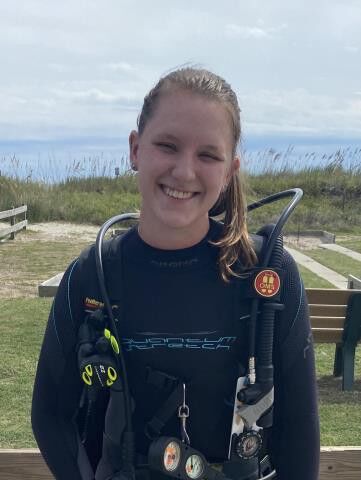
Sydney Madden
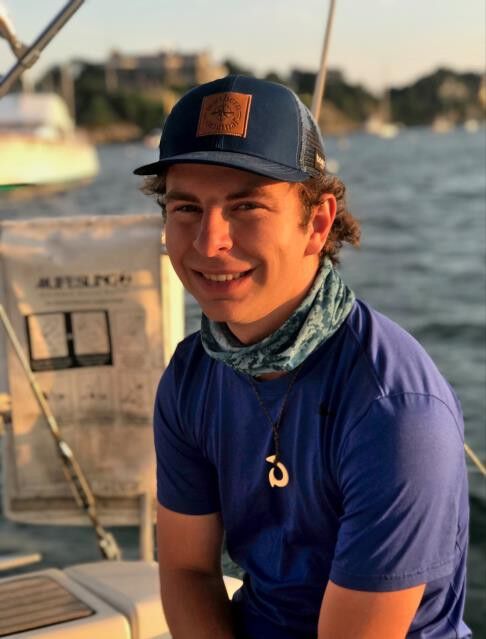
Myles Wagner


